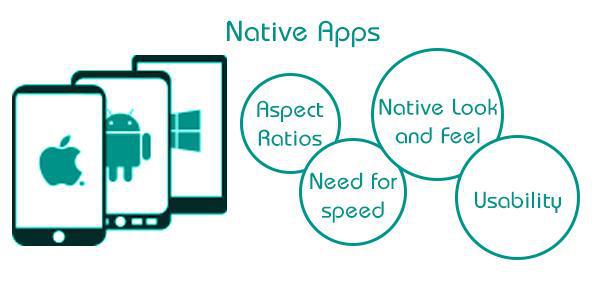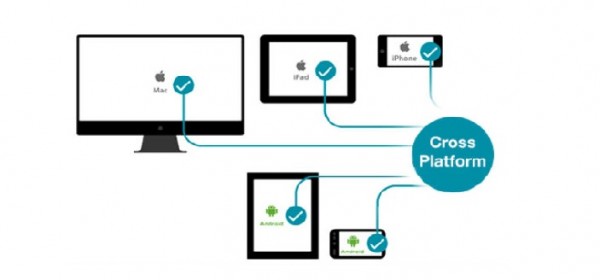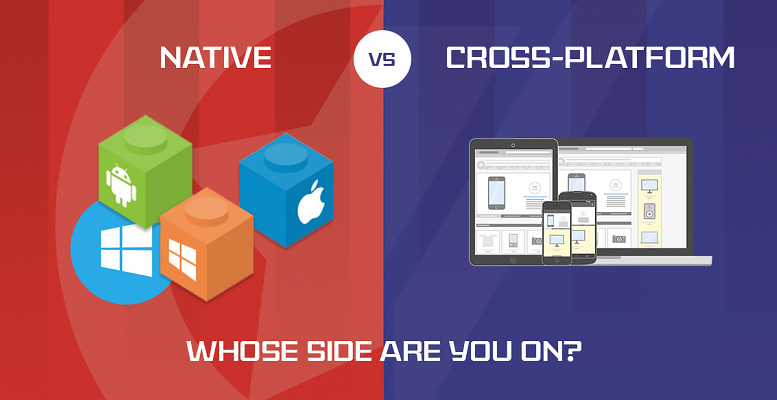Cannot decide which one you need – native or cross platform development tools? Let’s reveal who a true champion is.
Today we’ll do our best to find out what approach’s more favorable, hence, how to choose before you start building service of your dreams. We’re determined to take such an issue seriously to assist you in the most efficient way.
Native application development
Shall we figure out what native app development refers to? That’s a good point to start with.
Actually, it’s pretty simple: we’re talking about a certain approach of creating a service for a particular operating system – either iOS or Android. Such a process is supported by Java & Kotlin in the case of Android devices, and Swift & Objective-C for iOS gadgets.
Considering native methods’ pros and cons shall help us learn more about the given technique.
Native building strengths
- Sustainability reinforced by top speed – such was made possible by the possibility for developers to apply instruments of a definite OS.
- The simplicity of features installation – the earlier mentioned advantage makes the final product be really responsive and flexible.
- Streamlined service launch procedures – it’s incredible that simple to publish an app at GooglePlay or AppStore accordingly.
- Freedom from any 3rd party library limits – the native means is the best choice for creating services with sophisticated unconventional functionalities since the cross-platform approach is rather compromised to fit diverse OS.
- Robust UX/UI vision – Android users’ interfaces differ from iPhone ones. Various customers choose different designs. Native tools are more convenient to provide their audience with what they’re accustomed for.
Native building weaknesses
- Higher costs – since iOS as well as Android specialists are required, expenditures get pretty high.
- Long development period – when willing to launch a program for both platforms simultaneously, longer time will be taken to finalize the service.
- High-priced support – the most interesting starts as soon as a program’s launched, cos it requires continuous updating and error fixing.
And now, when you already know more about native app development, let’s see what cross-platform solutions are like.
Cross-platform application development
The cross-platform approach optimizes the making process. It makes the source code applicable to various platforms. Having an .ipa extension file for iOS and an .apk one for Android, still, a few alterations will be needed to make an .ipa extension run for Android gadgets.
Those are few of cross-platform tools:
- Xamarin
- NativeScript
- Flutter
- Appcelerator
- React Native
- Cordova
Are you willing to proceed to the mentioned solution pros and cons? Let’s check on them.
Cross-platform making strengths
- Costs efficiency – building only one app to be run on numerous platforms is a decent way to save the budget.
- Android & iOS services simultaneous release – entering a few markets in parallel you reach out more potential users to have your program downloaded.
- Platform improvement simplicity – that’s due to the logic which is operated in a similar way on various programs.
- Analogous UX/UI design – single-code grounds make it possible for cross-platform tools to ensure an identical interface for every platform.
- Promising outlook – more and more services (pretty popular ones) are developed via cross-platform instruments, and multiple frameworks appear to assist cross-platform developers.
Cross-platform making weaknesses
- Limited possibilities to enjoy gadgets’ native functionalities – cross-platform development won’t provide complete access to various functions offered by a platform.
- Little flexibility – implementing some features might be complicated and tough since the cross-platform approach is less flexible than a native one.
- Not easy collaboration with GooglePlay and AppStore – app authorization might take longer than you expect, and every single update and change shall be authorized as well.
The time has come to put together those two means to decide who is our winner.
Native development versus Cross-platform building
Recent statistics reflect today’s smartphone market share situation making some predictions for the future. You shall be aware of some current trends, as well as the nearest forecasts, to make the right choices.
We’re to present you with such key criteria to comparison two development solutions.
# Platform dependency
Cross-platform services shall support various platforms, which are to be achieved by slightly adjusting the coding.
The native option shall work perfectly on a certain operating system requiring a separate app for another OS. Thus, more time and funds shall be invested in the final product.
# The audience experience
Favorable users’ experience is critical for service popularity and relevance. Hence, the design shall be given due attention to make it user-oriented. The native tools are proud to provide customers with an interface type for a certain platform, making it simpler for individuals to get familiarized with a new solution.
Though, the cross-platform technique serves to build kind of a standard UX/UI style for several OS. It’s vital here to be careful keeping key controlling means common for both Android & iPhone gadgets. Otherwise, the audience might feel lost or confused.
# Limiting
Applying native methodology the interactions between an app and a certain operating system turn out to be simply managed. Thus, no need to put much effort to access diverse gadgets’ services.
However, when building by means of cross-platform instruments be prepared to be possibly limited – one way or another – by certain functions of a specific framework.
# Staying engaged with your audience
Cross-platform services give you enough freedom reaching out to more users compared with the native possibilities. That’s a fact, since being aimed at a few OS cross-platform applications interact with both Android & iOS fans.
The cross-platform technique allows you expanding your audience base easy and fast.
# Building together with maintaining costs
Once again we’d like to emphasize that native making will need Android experts, as well as iOS ones, therefore, increasing your budget. Obviously, cross-platform solutions shall save your funds.
The same goes for supporting aspects. Native maintaining is more costly since the program is more complicated compared to cross-platform platforms.
Summing up…
Pick the Native making, if:
- your app shall operate either on Android or on iOS platforms when you know exactly what OS your final customers enjoy more;
- your service has to have full access to multiple cell phones characteristics;
- your app needs to benefit from the gadgets’ software to the fullest.
Basically, when striving for building a sophisticated online product, under the condition of having a nice budget, simply take advantage of the native benefits.
Pick the Cross-platform making, if:
- you’re creating one service for two OS at the reasonable costs;
- you’d like to enter Android/iPhone markets quickly;
- you make a platform without any extra complicated animation;
- you’re building a mobile service having constant Internet access for downloading various contents.
As you’ve already noticed, it all depends on your objectives. Your requirements shall show you what method you need to apply in order to make your dream app come true.
Do you remember our initial question – “what solution is right for you?”. Well, now after you’ve learned on what each approach offers you, the answer is obvious, right?





